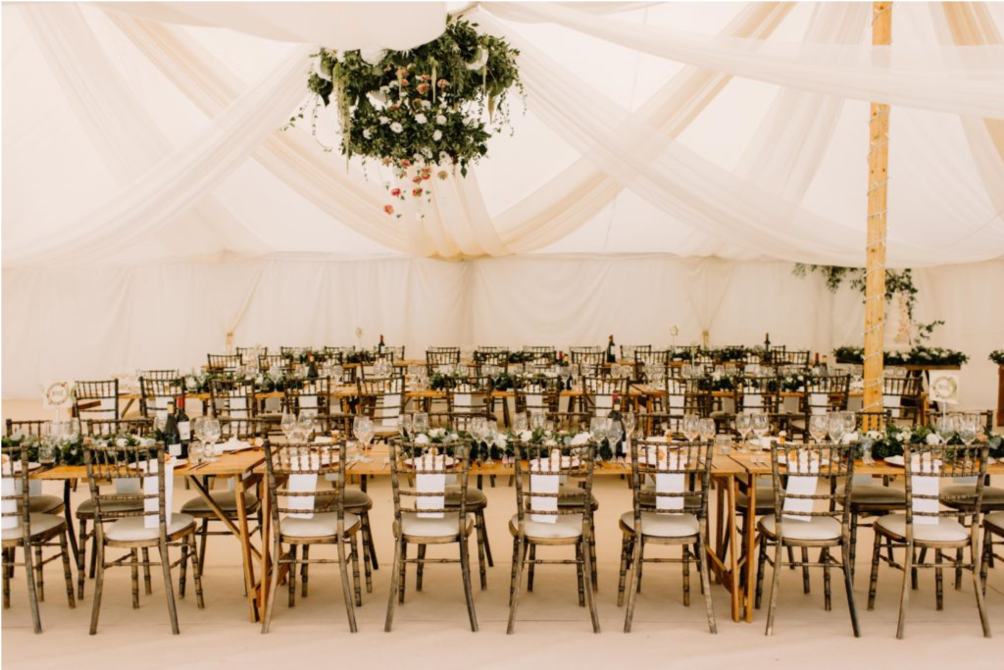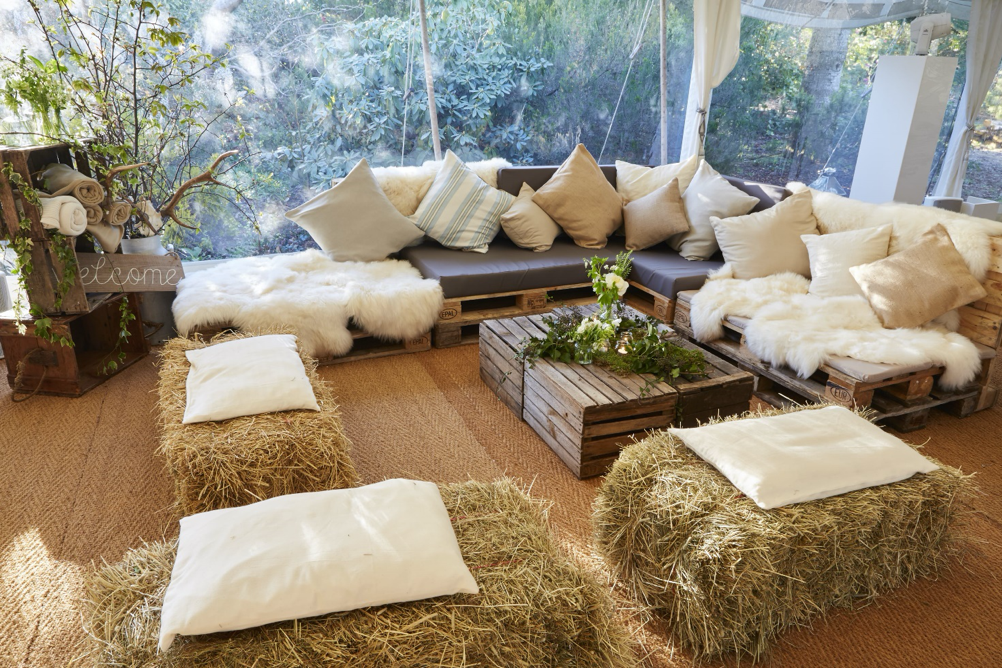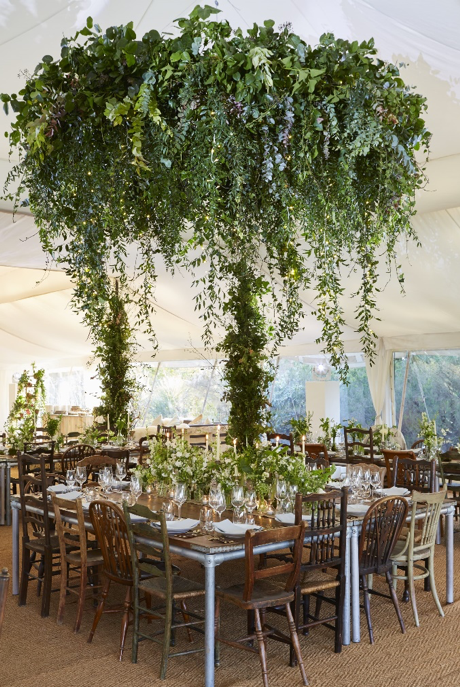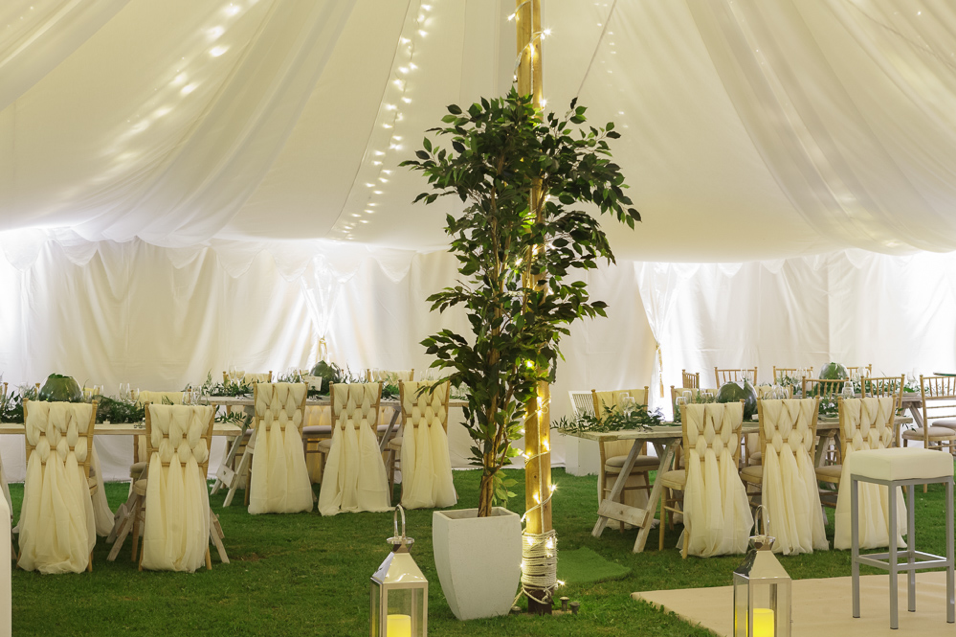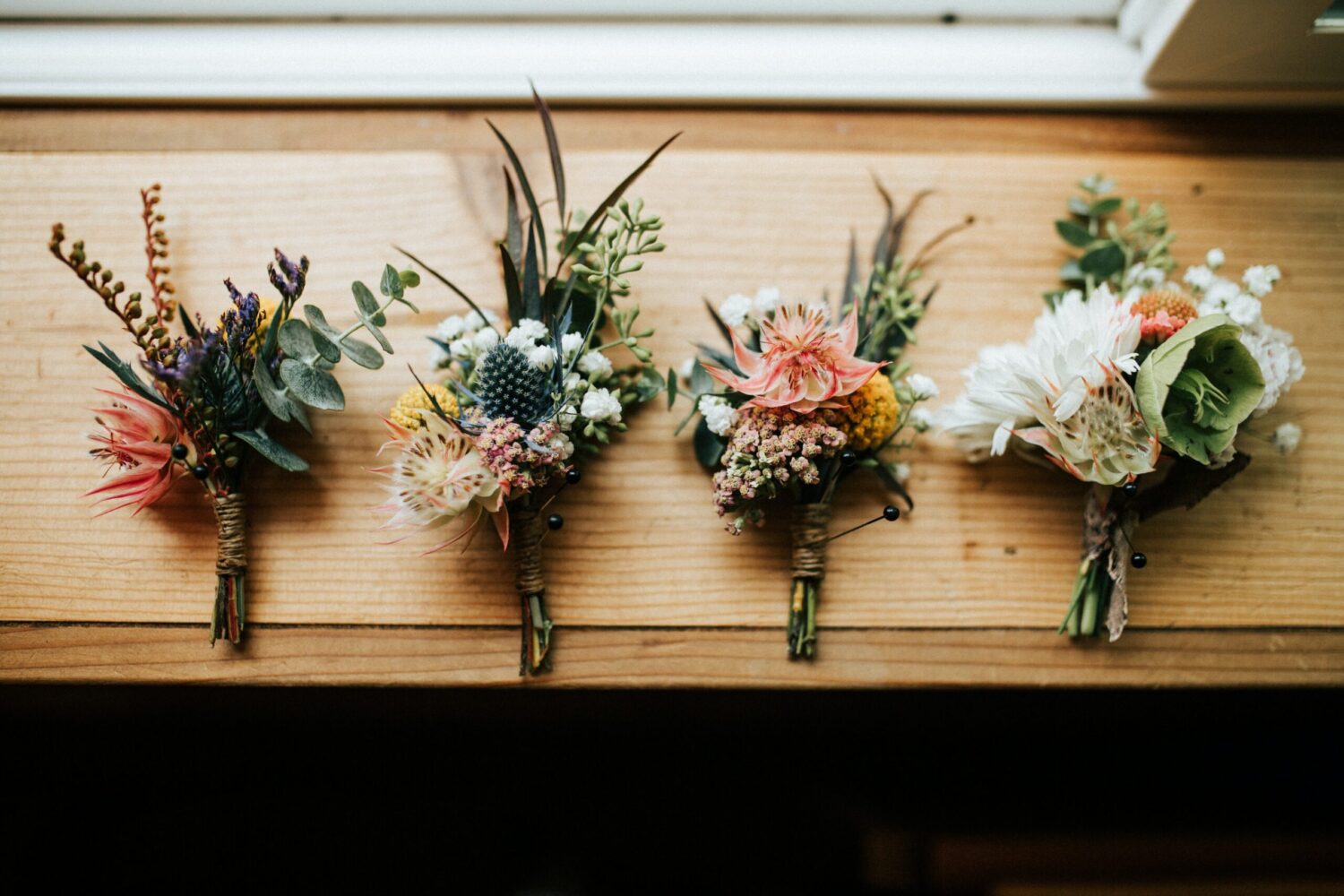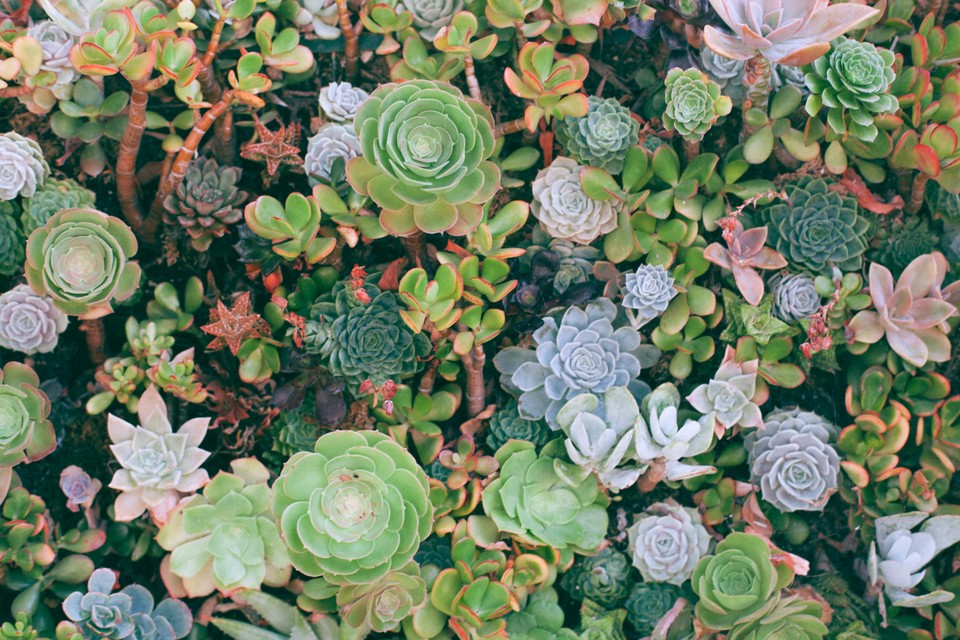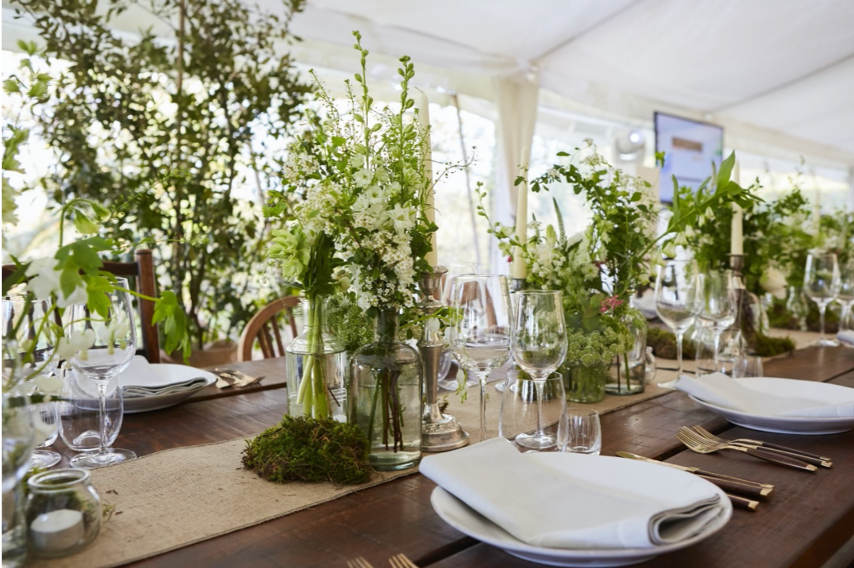
Green weddings
Why Biophilic Design Will Work Wonders for Your Wedding?
When you picture your dream wedding, where do you feel happiest; the most connected, relaxed or content? Does ‘getting away from it all’ for the big day conjure ideas of wilderness, birdsong and green vistas? The gentle trickle of a water feature in a country garden, hazy dappled sunlight, the scent of wildflowers in the breeze and the comforting sensation of grass between your toes? Is the sensory deprivation of your daily urban grind leaving you wistful for a multi-sensory nature hit? You’re not alone!
Biophilia is ‘the love of life or living systems’, and it’s instinctive. We have a deep-rooted connection to the natural world and yet our busy modern lives often limit our time within it. According to Human Spaces Global Report of 2020, on average, we spend an estimated 11 hours a day staring at screens and smart phones and up to 93% of our time indoors. 66% of the world will be urbanized by 2050. We’re fatigued by built-up concrete environments and synthetic lighting. Depression, low productivity and a feeling of dis-connect are common modern maladies. It’s no wonder our fundamental need is to re-connect. We need to go back to our roots to re-charge!
Biophilic Design is a term coined and popularised by American psychologist Edward O Wilson in the 1980’s, borne out of his concern of the negative effects of urbanisation. The idea encourages the use of natural elements in the design of your surroundings. The aim? To stimulate all your senses, as nature would. By consciously using natural elements in interior design, we are unconsciously re-connecting with what makes us most happy. It’s a growing movement! Green is the most naturally instinctive colour to us. The more submerged people are in modern life, the greater their innate craving to immerse themselves in the physical beauty and inherent unity of the natural world.
Recent reports, including the Human Spaces Global Report with prof Cary Cooper, prove that including elements of nature in the design of our surroundings can have a hugely positive impact on our well-being, creativity, productivity, health and happiness. The closer we are to the natural world, the happier we feel! Nature has a profound psychological effect on us and it’s great news that scientific understanding of this is mounting.
You may have started to notice elements of biophilic design at weddings and events. Living green walls, flower walls, water features, atmospheric scents and natural materials that make you instinctively think of the great outdoors are being utilised by sharp event planners focused on wellbeing.
What can biophilic design add to your wedding?
Concepts that spring to mind when you imagine weddings are those often heavily associated with nature. Marriage is life, renewal, growth, harmony, freshness, safety, fertility, and environment. The principles of biophilic design both celebrate and embody these concepts.
The key to harnessing biophilia in the design of your wedding or event is to create a restorative space that subconsciously connects your guests to the sense of wellbeing they feel when outdoors. You don’t have to create a jungle for your herds. Closeness to nature doesn’t necessarily mean proximity to a pot plant or two. Take them back to a material connection with a natural environment; with hints of raw earthiness, such as the knots and grains of wood or scatterings of plants and herbs. Use materials, grains, textures and elements in design that distinctly reflect the environment to create an overarching sense of the natural world.
A marquee event is particularly advantageous for this purpose. By mimicking the finer details of the natural world with textiles, artwork, light, shapes or patterns and stunning views of nature you can re-create the biophilic human connection to great effect. Where better to immerse your guests in nature and fulfil their desire to reconnect than in a beautiful tented palace in the outdoor space of your choice?
You don’t have to find the perfect country seat to embrace biophilic design. If your budget doesn’t stretch, or you’re planning an urban city wedding, clever hints of nature can subconsciously transport your guests to greener realms. For decor, think lush green foliage and wildflower centre-pieces.
Adorn rustic furniture, or our reclaimed wood outdoor-seating, with natural fabrics such as cotton, sheepskin or hessian.
Make an impact that wows with large-scale decorative features like our bespoke twisted twig, leaf and floral chandeliers.
Living green or moss walls can make a space feel alive and add an instantly fresh hit to contrastingly urban environments, or replicating a natural element to an otherwise non-natural object, such as this Astroturf bar, really helps to achieve this look.
Never underestimate the power of a water-feature to add a touch of classic serenity to any setting, whether indoors or in the great outdoors.
Incorporate foliage trees to bring the outdoors, in works too.
The principles of biophilic design embrace a love of nature with all our senses and we are inspired to explore unusual elements wherever possible. To add a finishing touch to your biophilic world, our scent machines can flood a space with the smell of cut grass, summer breezes or sensual and musky evening Oud tones.
Play around with the design of your lighting. It’s a too often overlooked feature that we feel should be a key consideration when setting the scene for an evening affair. Utilise any natural light and remember fresh air and the circadian patterns of the sun are incredibly useful tools to boost happiness and well-being. Whether you are planning sun-downer drinks in country gardens or you are taking your guests inside to kick-start the party; add warmth with natural, soft, peachy and muted sunset tones. The most impressive way to ensure your guests are making the most of an evening in nature? Add a little fire! Sipping cocktails by the fire whilst stargazing is the perfect biophilic breather from the dancefloor.
At The Arabian Tent Company we believe that elements of nature within design aren’t a luxury, but a fundamental necessity. Biophilia is a significant part of the human psyche that can be played upon beautifully when hitting the design board for your event. What a gift to temporarily transport your guests in to a natural wonderland and know that you are simultaneously boosting their well-being! Biophilic design isn’t just a good design trend, it’s a vital injection of health and happiness to restore and revive our busy modern lives - and to create the perfect back-drop for a wedding.
How to extend the concept of biophilia beyond your big day?
At The Arabian Tent Company we have worked hard to incorporate a love and respect for nature into all our endeavours. This means helping our clients to create events that don’t heavily impact the natural world. It means providing sustainable solutions to difficult questions of power, transport, waste, food and all other event necessities. We only use and recommend suppliers who behave responsibly and with a sustainable focus.
Added to this, we have introduced a carbon-offsetting scheme for our clients to offset the unavoidable footprint created by transporting the set and structure to their wedding.
We have suggestions for improving and contributing to the natural world rather than depleting resources. Gifting a tree to be planted for each guest is the perfect gift that keeps on giving - and growing - as the planet faces such extreme environmental challenges this century. This gift also helps to offset the carbon involved in collecting loved ones in one place to celebrate their union.
Rather than buying cut flowers transported from exotic locations, we suggest planting in-season blooms to decorate your day and supplementing with foraged foliage from the surrounding area. You can also rent established plants and trees should your event require an extra biophilic boost.
Wildflower seeds are another gorgeous gift to set at each place setting. They can be stored for years, and when planted encourage bees and photosynthesis.


